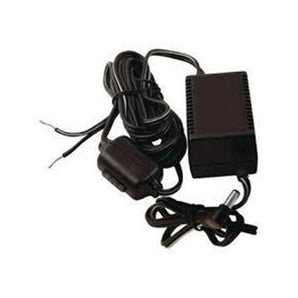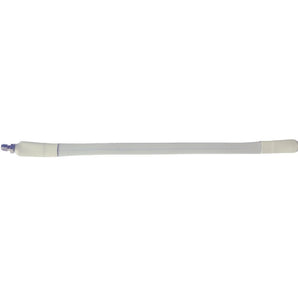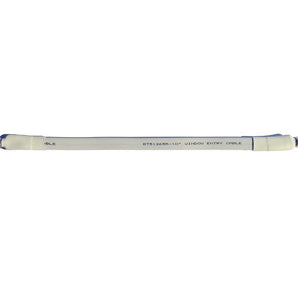4G vs 5G Towers in South Africa
In South Africa, the most reliable way to stay connected remains through cellular networks—even in areas with weak reception. Devices like cell phone signal boosters can significantly improve your signal quality, whether you're in a remote township or a bustling city.
The latest cellular technology is 5G, delivering faster speeds and higher capacity compared to 4G. While 4G remains robust for voice, SMS, and broad coverage, 5G elevates performance - especially in urban areas and for enterprise uses.
4G infrastructure already covers most of the country, while 5G is expanding rapidly in major metros like Johannesburg, Cape Town, and Pretoria. But how do you differentiate them at a glance?

4G Towers
- Size and Structure: Large macrocell towers—often rooftop or mast-mounted—cover wide areas using lower-frequency bands (700 MHz–2.5 GHz).
- Appearance: Visible structures, sometimes camouflaged (e.g., as trees) to integrate with urban and rural landscapes.
- Functionality: Provide reliable voice, SMS, and data services across wide reach.
5G Towers
- Size and Structure: Many 4G towers are being upgraded with 5G equipment (sub-6 GHz). However, true 5G relies heavily on compact small cells placed every few hundred meters in dense zones.
- Appearance: Subtle units mounted on utility poles, streetlights, or building exteriors—designed for urban stealth.
- Technology: Operate on mid-band (e.g., 3.5 GHz) and high-band (mmWave) frequencies, delivering faster speeds where most needed.
These small-cell networks form the backbone of 5G in cities, improving speed and capacity without the bulk of traditional towers.
How Many 5G Towers Are There in South Africa?
By end of 2024, over 50% of South Africa’s population had access to 5G networks - reaching approximately 10.8 million subscribers, including mobile and fixed-wireless access users. Operators aim to reach around 60% coverage by end-2025. Most recently, Vodacom reported ~52% population coverage by early 2025.
Why Are 5G Towers So Small?
5G utilizes small-cell technology: compact radio units consuming minimal power and space, installable on poles, structures, or inside buildings. Coverage radius is short - usually 10 meters to a few hundred meters - so many are needed for seamless network coverage. These are connected to the network via fiber or microwave backhaul.

Are 5G Towers Dangerous?
No - 5G towers are not dangerous. The term “G” stands for “generation.” Regulatory bodies in South Africa (ICASA) and global scientific consensus confirm that 5G signals are safe when within exposure limits.
How to Tell the Difference Between a 4G and a 5G Tower
| Type | Description |
|---|---|
| 4G Tower | Large mast or rooftop structure with multiple clustered antennas. |
| 5G Small Cell | Sleek, compact unit mounted on poles or buildings - far more discreet. |
Often, 4G towers host 5G tech too. But if you notice mini-boxes on poles or streetlights in city centers, you're spotting 5G small cells in action.
Frequently Asked Questions About 4G and 5G Towers
What is the difference between 4G and 5G towers in South Africa?
4G towers are large macrocell structures using frequencies from 700 MHz to 2.5 GHz, providing wide coverage for voice and data. 5G towers often use small cells, mounted on poles or buildings, operating on mid-band (e.g., 3.5 GHz) or mmWave frequencies for faster speeds and higher capacity in dense urban areas.
How can I identify 5G towers in South Africa?
5G towers are typically small cells, appearing as compact units on utility poles, streetlights, or building exteriors in cities like Johannesburg and Cape Town. Unlike large 4G macro towers, they’re discreet and blend into urban settings.
Are 5G towers safe in South Africa?
No - 5G towers are not dangerous. The term “G” stands for “generation.” Regulatory bodies in South Africa (ICASA) and global scientific consensus confirm that 5G signals are safe when within exposure limits.
Where are 5G towers located in South Africa?
5G towers are primarily in urban hubs like Johannesburg, Cape Town, and Pretoria, with small cells deployed in city centers and high-traffic areas. By early 2025, 5G covers about 52% of the population, with expansion ongoing.
How do signal boosters improve 4G and 5G connectivity in South Africa?
Signal boosters amplify weak 4G and 5G signals, improving connectivity in homes, offices, or vehicles. They capture external signals, boost them, and rebroadcast indoors, ensuring reliable calls, texts, and data in areas with poor reception.
How May We Help You?
Bolton Technical provides high-quality cell phone signal boosters that amplify 4G and 3G (LTE) signals across homes, offices, and vehicles throughout South Africa.
- Free consultation with our South African-based team - email us on sales@boltontechnical.co.za or call JHB 011 749 3085 or CPT 021 879 3057.
- Free shipping on orders over R750 to major cities - usually ships same day.
- 30-day money-back guarantee - your satisfaction is assured.







